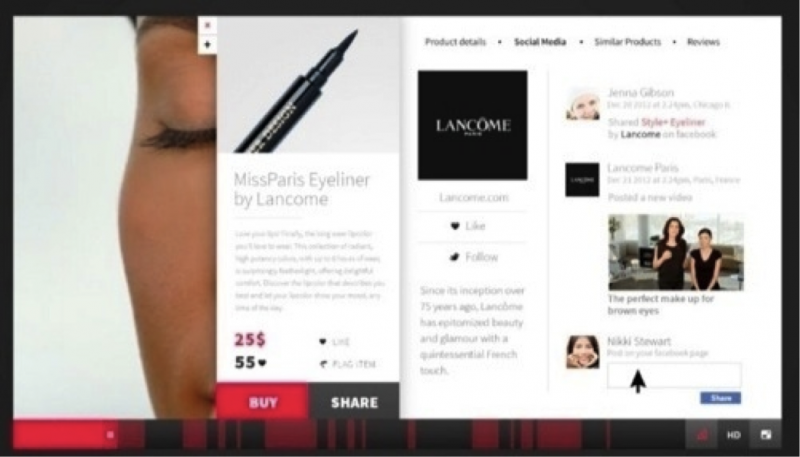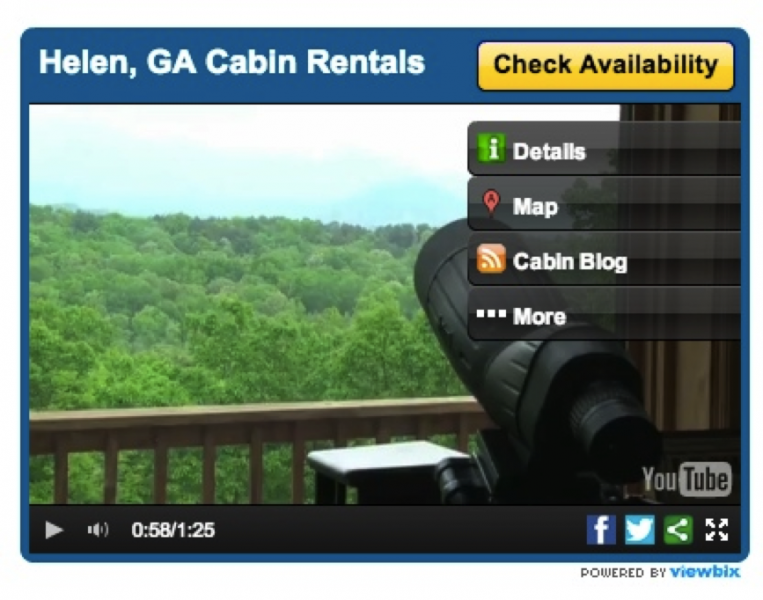Move Beyond Awareness With Interactive Video
Our advertising forecast shows that online video for marketing is big business and is only going to get bigger. In Europe, the CAGR for total ad spend from 2013 to 2018 is 2.19%, but for online video ad spend, it is a staggering 18.83%. The US shows a similar (albeit smaller) skew, with total ad spend CAGR of 4.49% and video at 22.39%.
Video, then, is a big deal, but most marketers aren't realizing the full potential of the medium. Approaches to video online are broader than simply grabbing 30 seconds from your TV commercial and sticking it on an online display network. Broadly speaking, there are three approaches to video:
- Linear video — static. Pre-rendered content, where the video plays from beginning to end. It's just like TV adverts or the majority of video content marketing on the Web.
- Linear video — dynamic. Where video content is customized per user or segment, often at run time. This approach interacts with consumers' data (e.g., social profile information) and/or context (e.g., location) but does not allow users to directly interact with the material when playing. A great example of this is one directed by Jason Zada and Jason Nickel from production company Tool and is called “Lost In The Echo,” which pulls in pictures from a user’s Facebook page, superimposing those snaps with photos that characters in the video mourn over.
- Interactive video (IV). A type of digital video supporting user interaction through gestures, voice, touch, and clicks. The richness of the interactivity can run across the spectrum. In IV, visual interactive elements are surfaced to users through hotspots associated with items in the video or timeline triggers, or are continually visible as an overlay to the video. With IV, users can interact inside the video itself, from filling out forms to taking interactive tutorials, playing game-like experiences, or viewing nonlinear jump cuts to new video material. Interactive video can also include dynamic elements. IV can contain static and dynamic linear video, too, making it a superset video format.
Stalwarts from the broadcast game are most skeptical of this fandango called interactive video — it's been talked about for years but came to nothing, they say. As far back as 2000, I was looking at and prototyping interactive video ideas with screenwriters and producers, investigating how video could be used for interactive storytelling. We used the new mp4 format by Philips, which was chock full of features, but in truth, while the technology was good, the broad consumer base was not really ready for it; data on mobiles was fledgling; broadband networks weren't quick enough; CD-ROMs had no real traction; and web pages were satisfying most consumers' need for information.
It was too early by far back then, but it's finally here now. In my new report, "Move Beyond Awareness with Interactive Video", I outline the medium and highlight some of its unique characteristics: from improved SEO performance to its impressive role in engaging users and providing better ROI for business objectives.
Still unsure of how the interactive video experience is made manifest? Here are a few examples of how interactive video can be used:
Example 1. Choose your own story path
This IV is from Philips, from its interactive grooming content marketers is titled Designed to Play. Users click on a facial hairstyle to select a story path, which then shows them how the style is achieved and what happened last night — a nice mix of product depth and entertainment. These videos are typically very sticky, with users replaying the video to explore all the sequences. One note to Philips however — where's the friendly muttonchops option !?

Example 2. Timeline interactivity prompts
This example by Lancôme provides an almost microsite-like experience inside the IV. Interactive elements, typically products, are highlighted by hotspots that are revealed along the timeline of the video. Viewers can interact with these hotspots to reveal more information on the product being shown, purchase items, or undertake various social activities. This is one of the most popular approaches for retailers providing an interactive product catalogue.

Example 3. Continual overlay of interactive elements
These two examples are from GA Cabin Rentals and Nike clothing. Buttons and controls are overlaid on top of the video at all times — not necessarily related to a particular frame or object in the video but relevant to the complete video. This can provide easy to access functions like maps, signup forms, or product catalog information.


Up until now, the Internet has changed only the distribution of video and not fundamentally altered how video is created and consumed. However, video experiences are evolving from a lean-back medium to something more pliable and interactive — creating a new canvas for the Web. Marketers should not sit still with their existing approach to video and instead should begin to embrace the new interaction design possibilities with IV. Innovative brands will hone their skills now, earn kudos and higher engagement with their consumers, and be in a better position to capitalize on the increased usage of this new medium later.
NOW, NEXT YEAR, THE HORIZON AND HOW TO THINK OF INTERACTIVE VIDEO
Most brands still think of online video as something to simply extend the reach of their TV campaigns or bolster their content marketing and display efforts. This relegates video to awareness and branding efforts when it can do so much more across the customer lifecycle. So . . .
- What's the one thing to do now? Move some of your budget for online display video into interactive video and trial. Online display is a classic discovery tool and one that interactive video has managed to improve by allowing interactivity for pre-, mid-, and post-roll video ads. Importantly, interactive elements are ‘pull,’ allowing users to interact with the extra content only if they wish. Samsung used an interactive pre-roll for its new Focus Flash phone, providing interactive elements that allowed users to find out more about the phone as well as click through to an eCommerce site. The interactive ad achieved a 4.1% interaction rate, nearly three times the interaction rate of a noninteractive ad. Of the viewers that engaged with the ad, 16% clicked on the banner to visit the special-offer website and 6% selected the option to learn more. Many video display providers, like MediaMind and Jivox, see interactive video as their most engaging video unit across the board.
- What should I plan for next year? Developing richer interactive video experiences across display, select publishers, and on your own sites. Get the full advice from my report, "Move Beyond Awareness With Interactive Video."
- What should I keep an eye on? Dynamic and interactive hybrids : AOL On and interactive ad startup Carambola are doing interesting things with their 'spot on' ad formats. The technology scans through video looking for relevant content that is contextually relevant to the viewer, then dynamically creates an interactive video. The image below shows how a cooking show video can be scanned to automatically bring in relevant quizzes, information, and offers. Vendors like Kiosked are also wowing publishers with this approach. These approaches provide reduced friction in authoring interactive content and can enliven existing content that you already have. They don't even feel like adverts.
- How should I view interactive video as a medium? Treat interactive video as a microsite and use it across the whole customer life cycle. Interactive video can be a container for any media on the Web and, as a result, requires a more diverse team than the standard content marketing personnel. To really address this new medium, brands must explore innovative interaction design methods blending entertainment, information delivery, and gaming techniques.
As usual, commenting is open for business. I would love to hear from publishers and advertisers across broadcast and online. Is interactive video something you are interested in? Will TV always remain a lean-back medium?